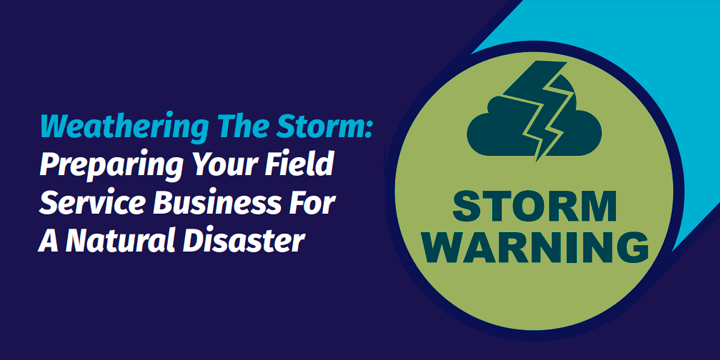Set Lead Generation Goals for Your Field Service Business

Goal setting is important to measure your marketing success, and generating new leads is vital in order to gain new customers. A well-rounded lead generation strategy includes utilizing your website, social media, local search engine optimization (SEO), outbound email campaigns, and online reviews. Here are some tips to help you measure each aspect of your lead generation strategy.
1-Website
Why It’s Important – Every field service business has a website, so if you don’t know how your website is performing, you won’t know what to fix to stay ahead of your competitors.
What To Measure:
1. Conversion Rate – Your conversion rate is probably the most important metric to track. This will tell you how any people visited your website and then purchased your services.
2. Sessions (Visits) – This is the number of people who have visited your website. It tells you the number of potential customers you are reaching. If you see this number grow from month to month, then it means more people are visiting your website. That said, it’s also valuable to note which ones returned to your site versus which ones were brand new.
3. Page Views – You want potential customers to visit as many pages as possible on your website. If this number is high, then it’s likely that they are finding your content valuable. On the flip side, it could also mean that your website isn’t easy to navigate, or they can’t find the information they need.
4. Traffic Sources – How are your visitors finding you? Knowing if they are coming from referrals, organic search, email campaigns, or social media will give you a better understanding of which source is most effective.
5. Bounce Rate – Your bounce rate will tell you what percentage of visitors are leaving after only viewing one page. The goal is for this number to be as low as possible because lost visitors means lost potential revenue.
2-Social Media
Why It’s Important – Social media should be incorporated into your marketing strategy because it’s an easy and economical way to promote your business. Measuring its effectiveness will help you determine which channels are performing.
What To Measure:
1. Engagement – Measuring your engagement shows how people are interacting with your content. This metric counts the number of likes, shares, comments, or clicks that your post receives.
2. Account Mentions – Account mentions are critical for your brand awareness and show how much attention you’re getting across all your social media accounts. For example, these include @mentions, shares, or links.
3. Impressions – This metric shows you how many times your post has shown up in someone’s timeline.
3-Local SEO
Why It’s Important – Local SEO improves your website’s ranking when potential customers search for specific services in your area. If your website is listed at the top of their search, you are more likely to get the sale.
What To Measure:
1. Keyword Ranking – Ensure you are using relevant keywords on your website that potential customers would Google. If your website is optimized effectively, your website will rank at the top.
2. Organic Traffic – Measuring your organic traffic will tell you how many visitors came to your website through a search engine such as Google or Bing. If this metric is high, it means your website’s keyword ranking is working.
3. Click-Through Rate (CTR) – Measuring your CTR will tell you how many people clicked on your website from their search engine results. Improving your keyword ranking will help increase your CTR.
4-Email Marketing
Why It’s Important – Email marketing, just like social media, lets you reach a large group of people for minimal costs (if any) and provides a high return on investment (ROI).
What To Measure:
1. Open Rate – When it comes to email marketing, one of the most important metrics is the open rate. This will tell you how many times your emails have been opened. Open rates will also tell you which subject lines are the most effective and which days your emails are opened the most.
2. Click Rate – This metric is key because not only did someone open your email, but they actually clicked on links that took them to your website, or they were able to view more information about the services you provide.
3. Unsubscribe Rate – Hopefully, you won’t have many, but keep an eye on your unsubscribe rate as well. If you see an increase in unsubscribes from a particular email, you will want to figure out what it was that your subscribers didn’t like.
5-Online Reviews
Why It’s Important – Online reviews increase your brand awareness and give your business credibility. It’s been proven that customers are strongly influenced by a positive or negative review.
What To Measure:
1. Customer Testimonials – Happy customers are more likely to share their experience with others, which will increase your brand awareness and enable you to gain more customers.
2. Customer Satisfaction (CSAT) – Your CSAT metric measures how satisfied customers are with your service. If your CSAT score is low, this could affect how your brand is perceived.
3. Net Promoter Score (NPS) – This metric measures your customer loyalty and asks them how likely they are to recommend your services. You can learn more about NPS here.





